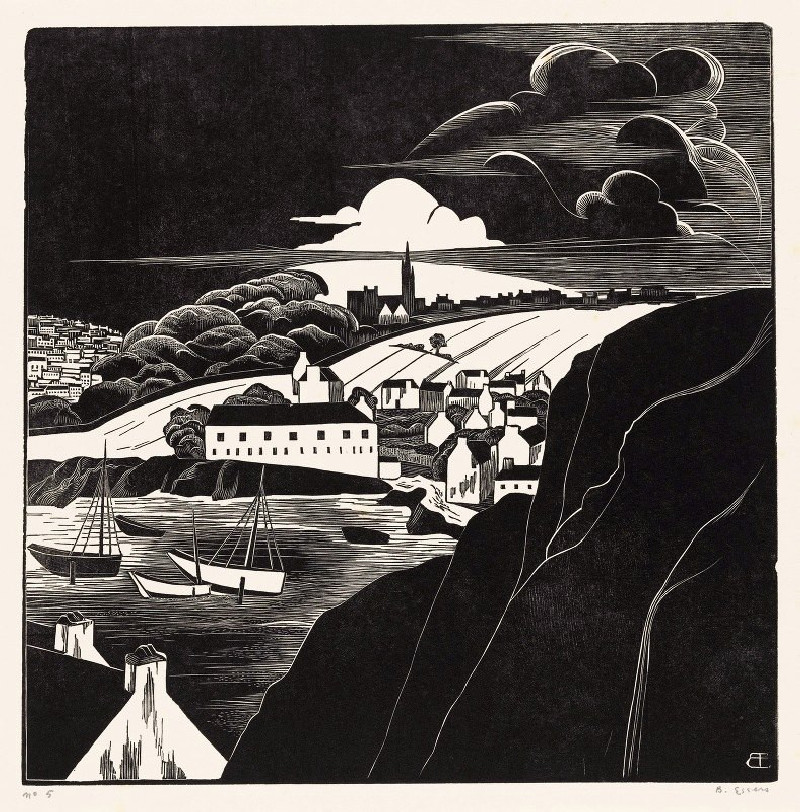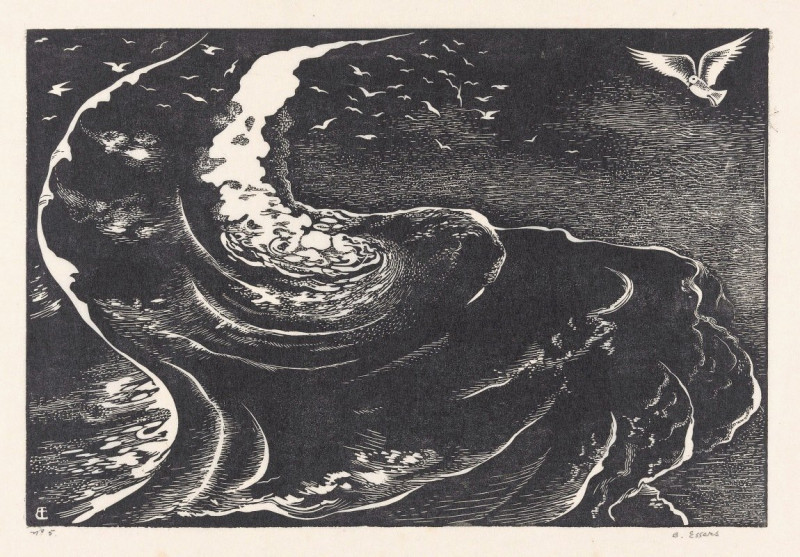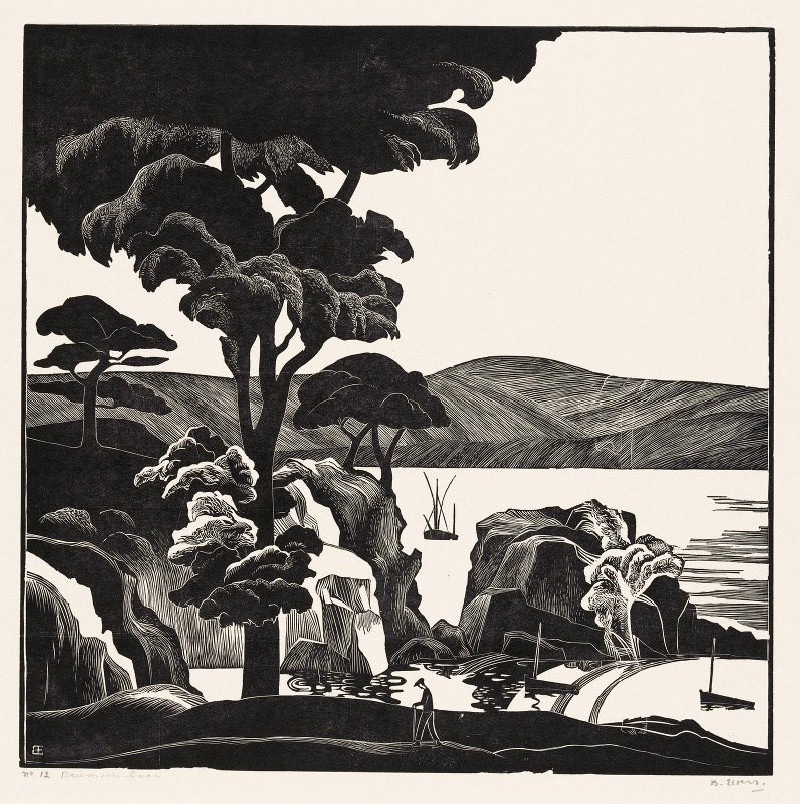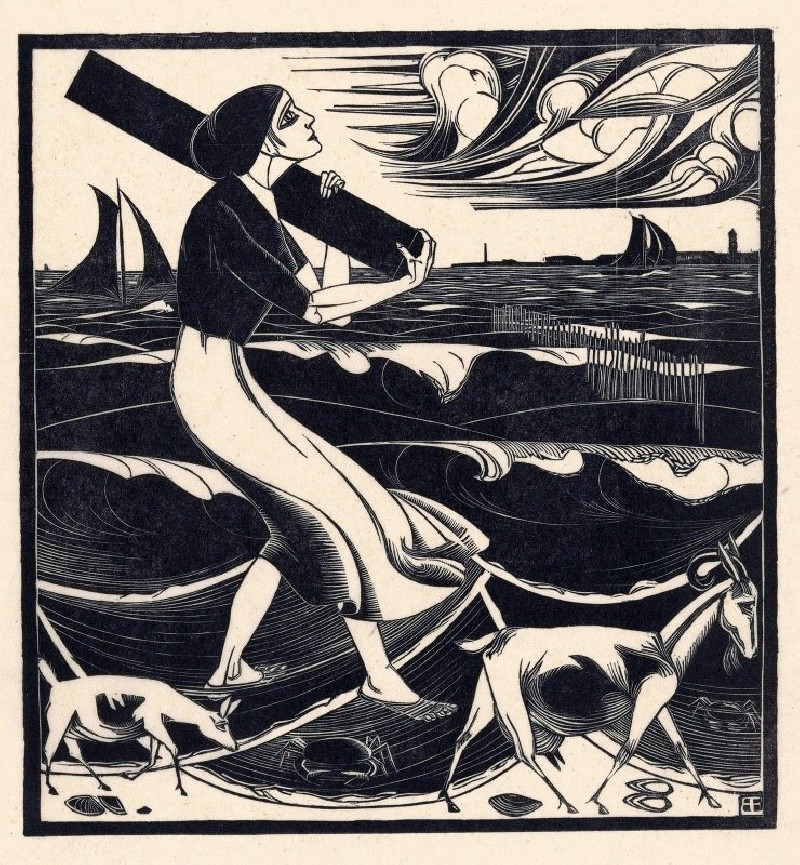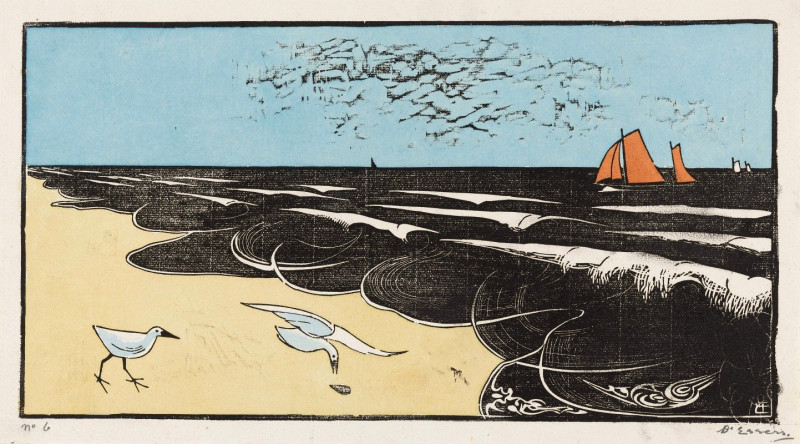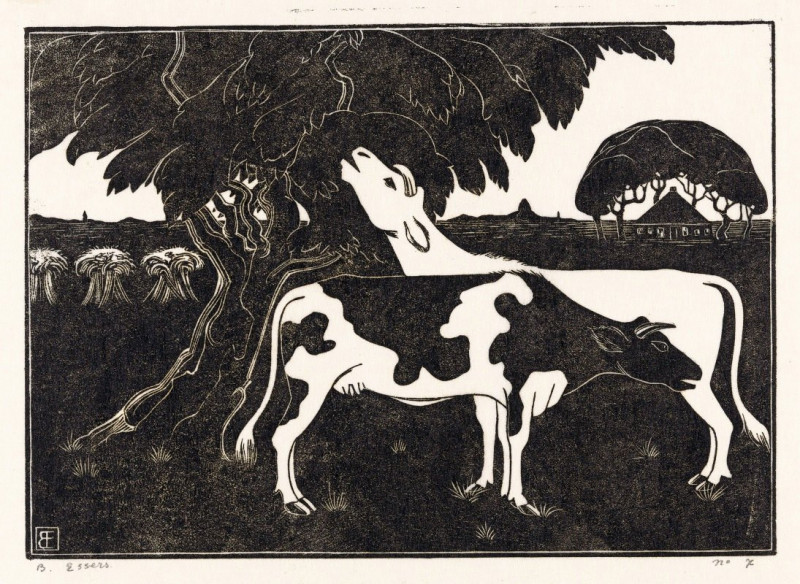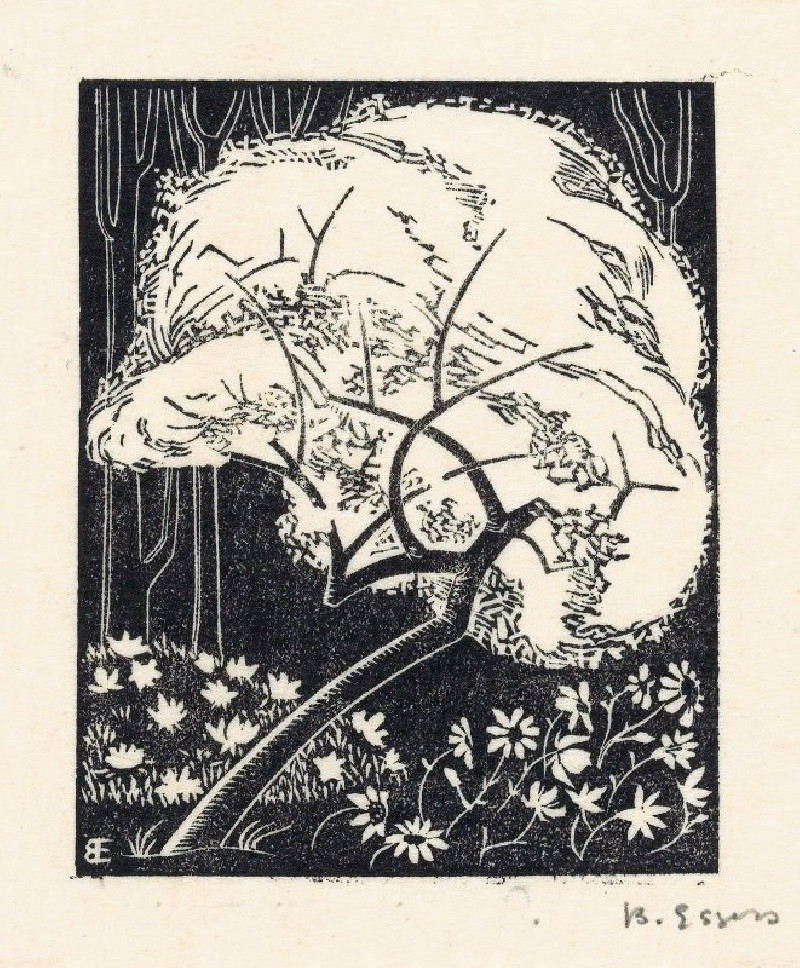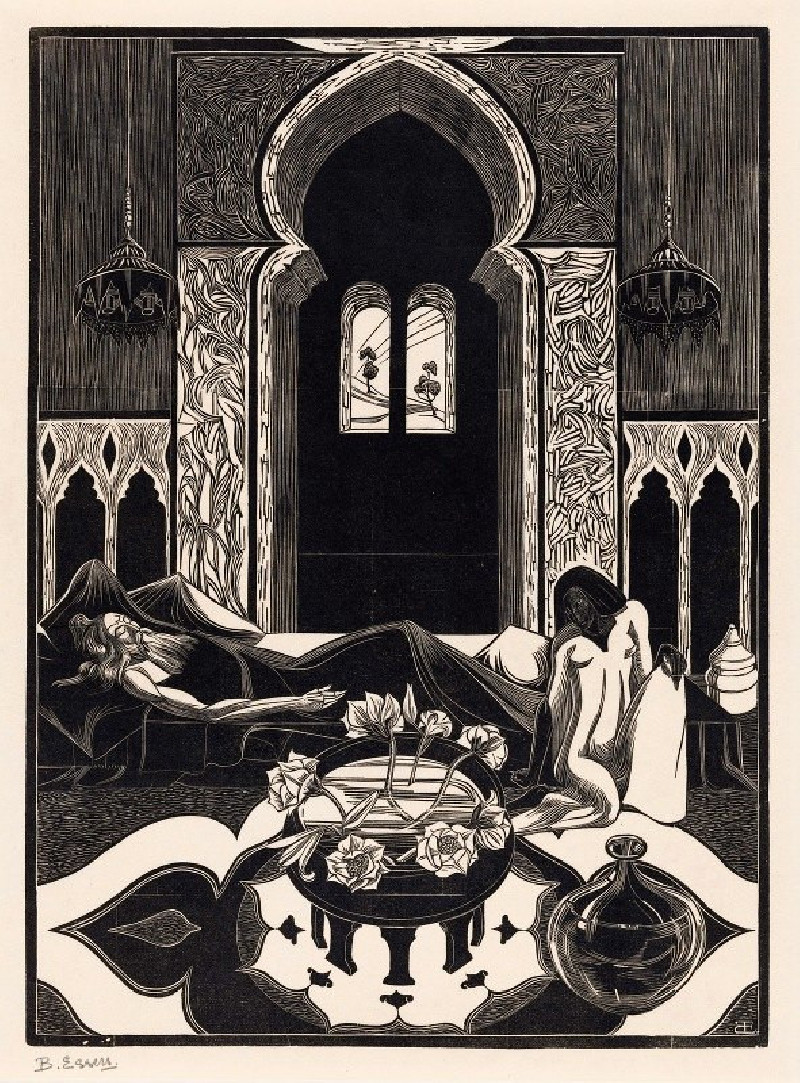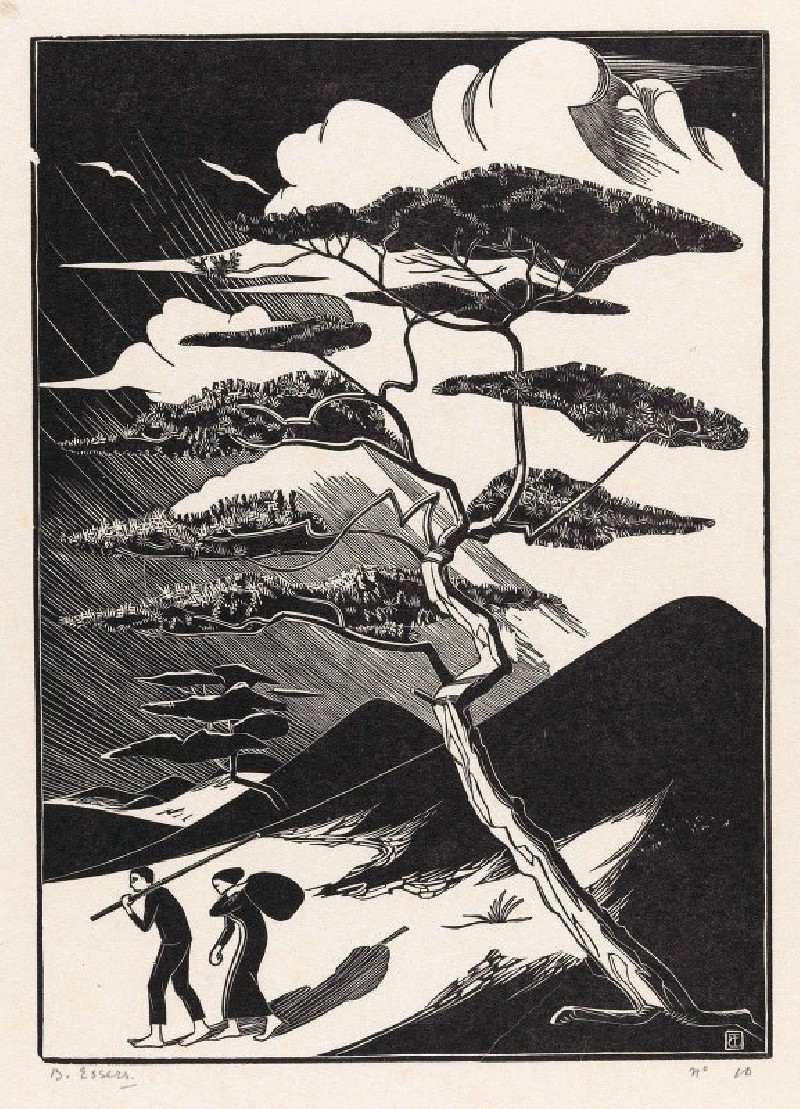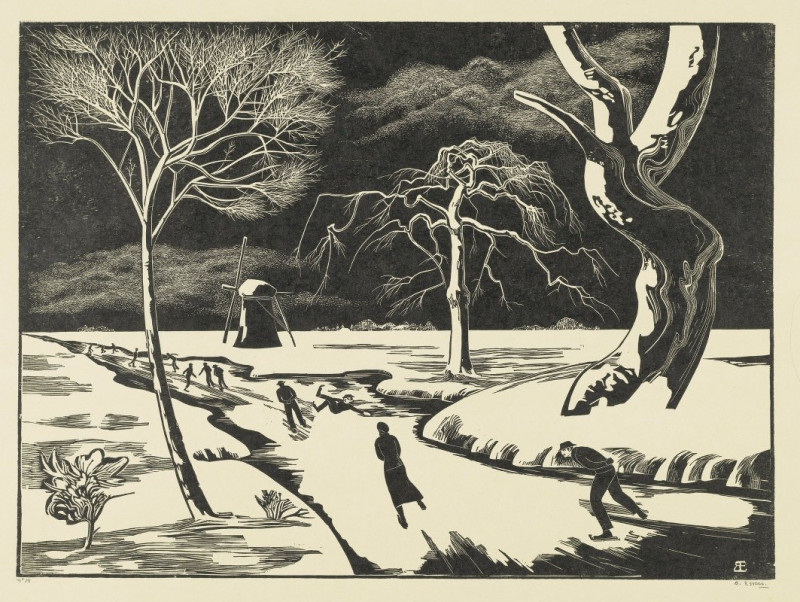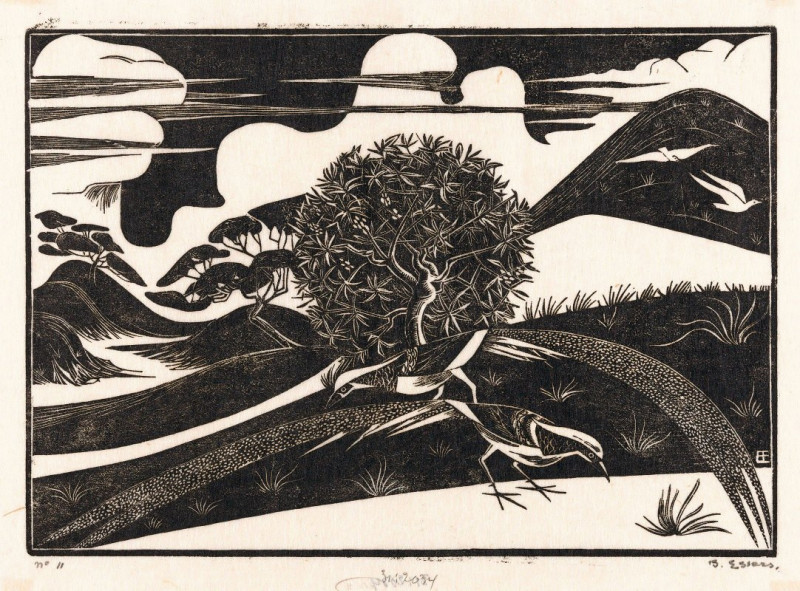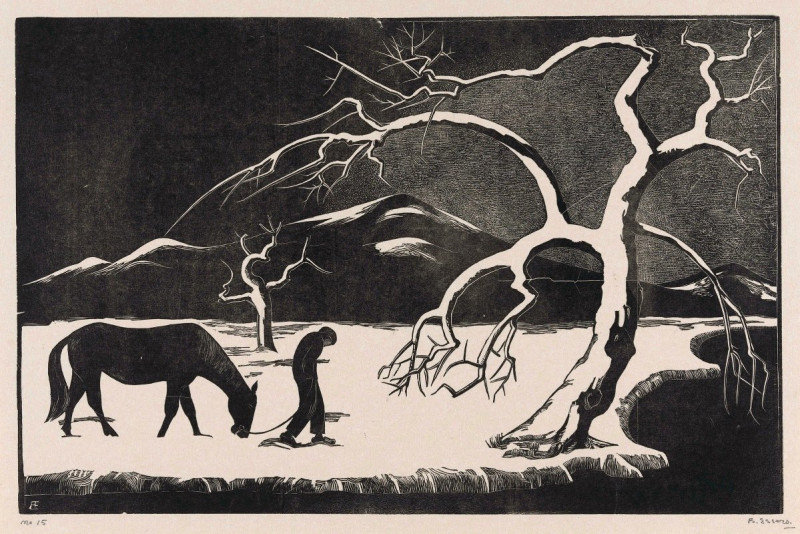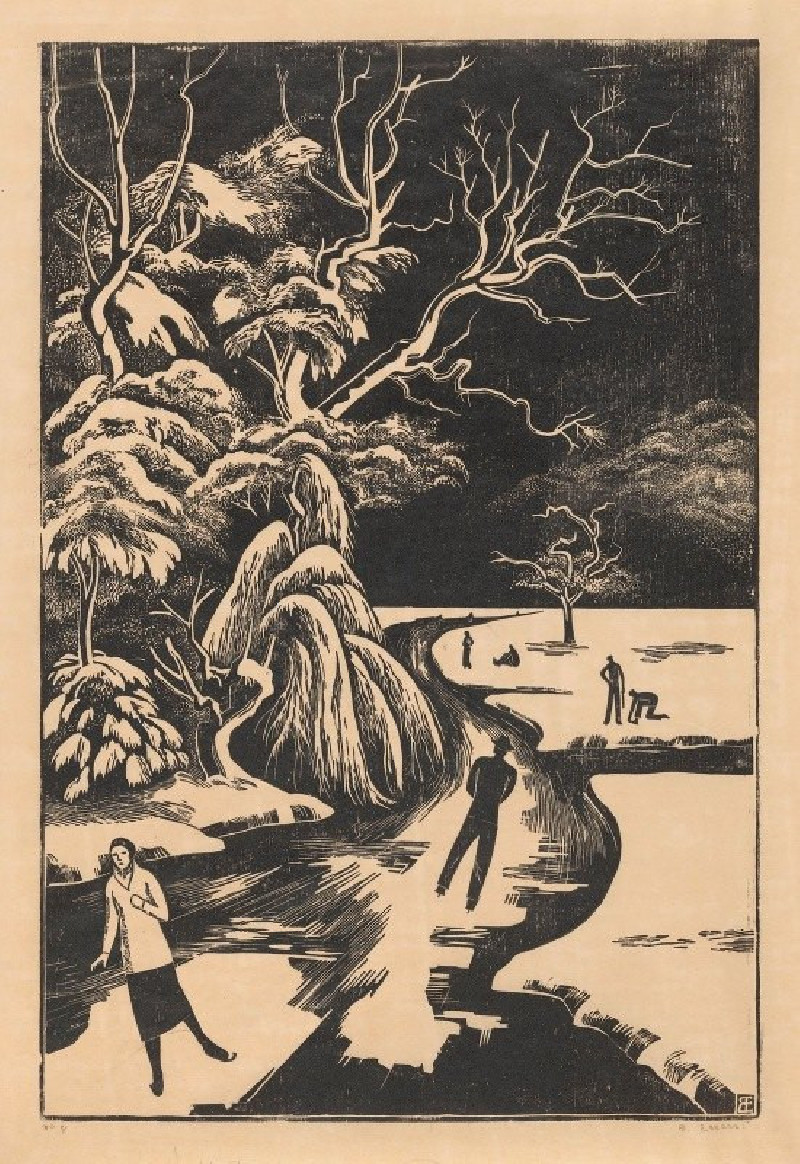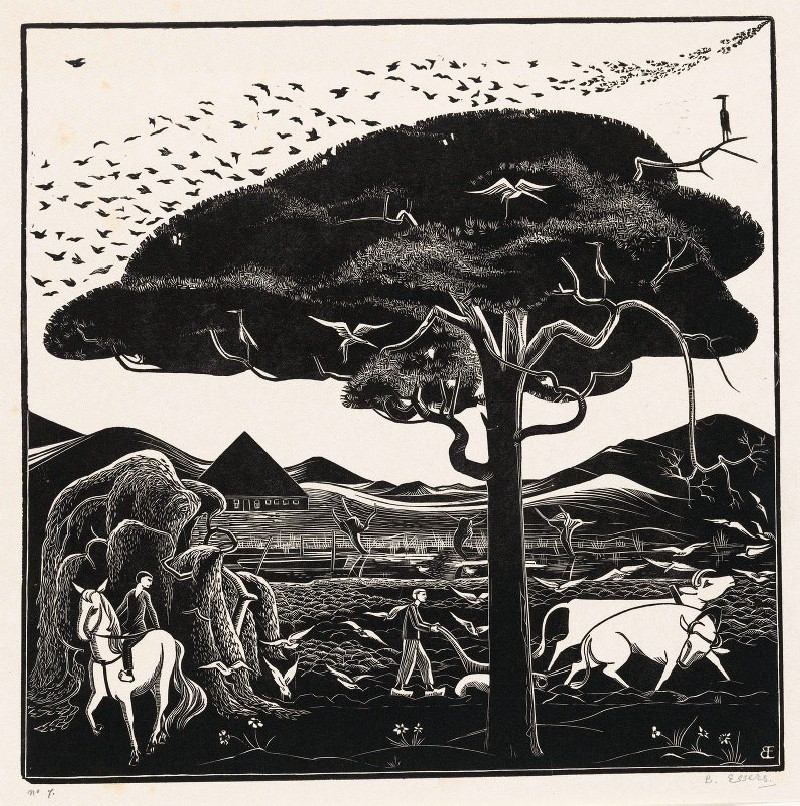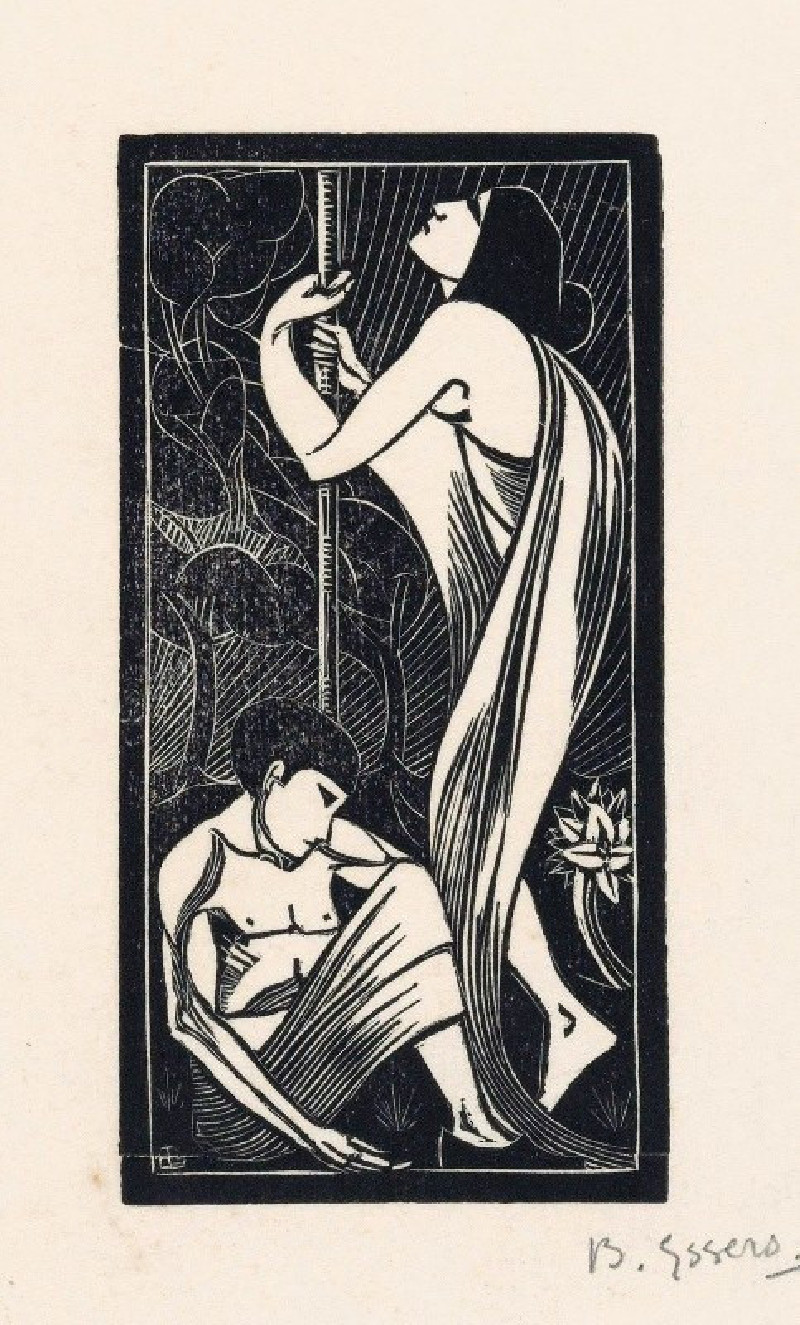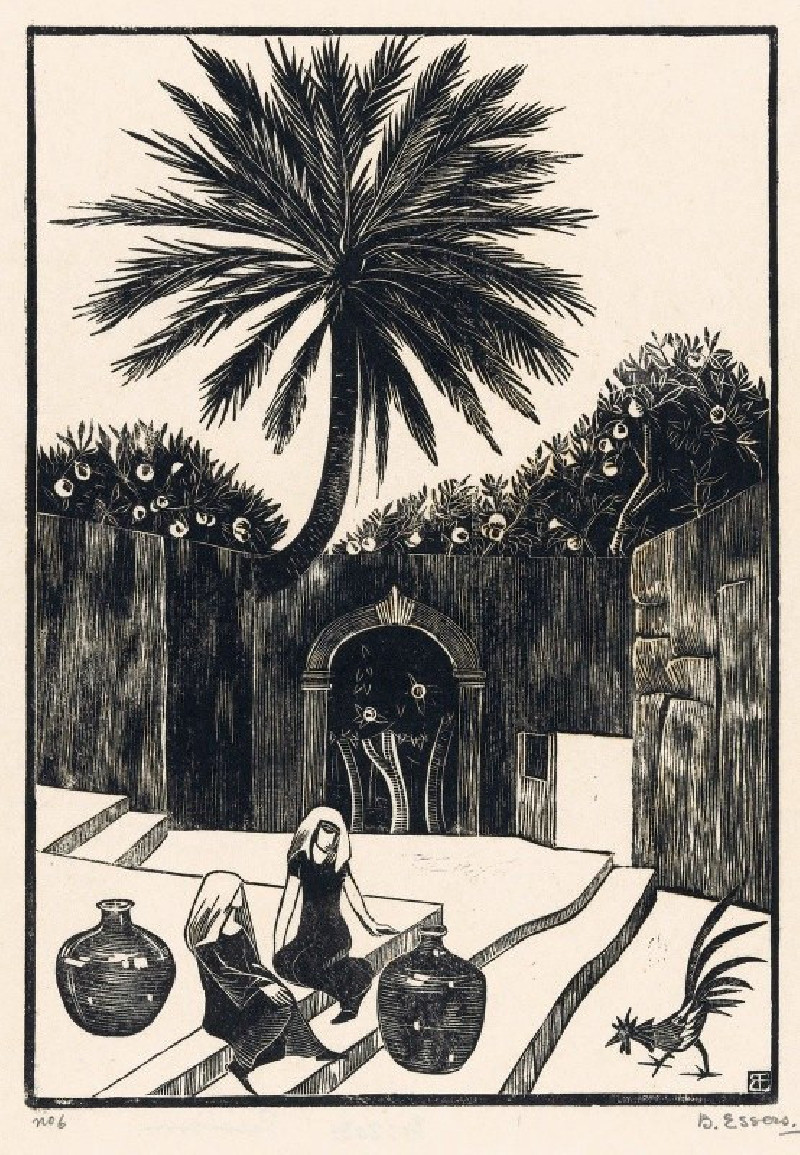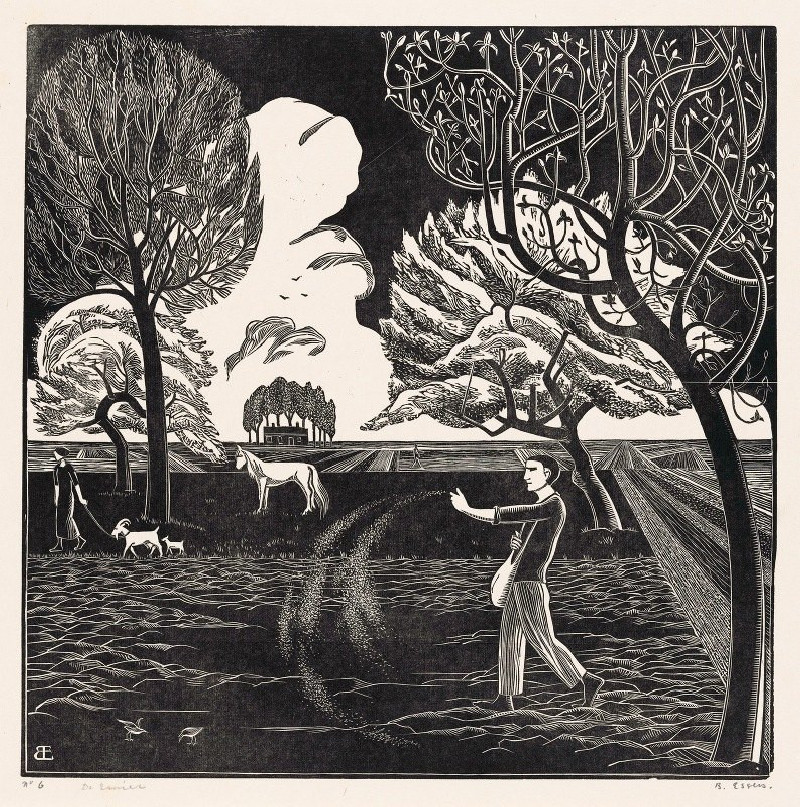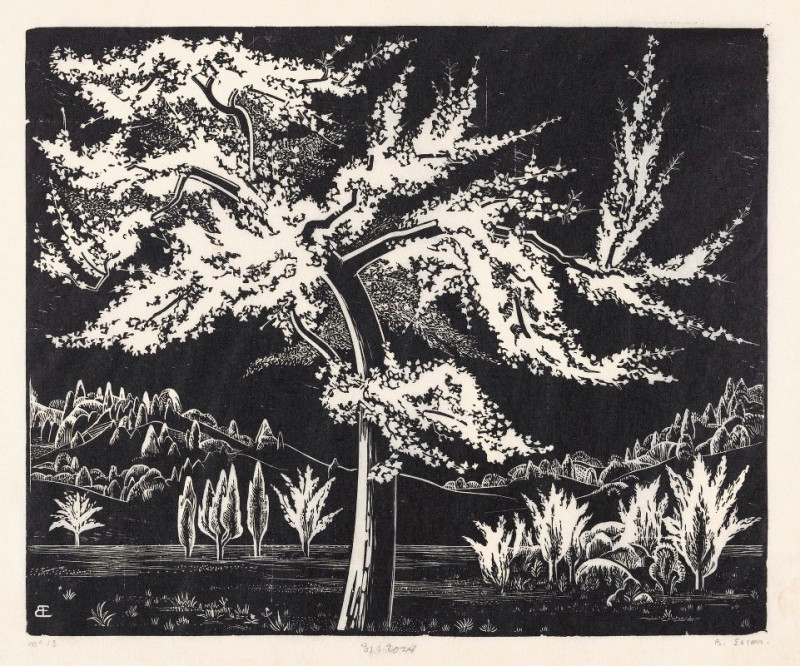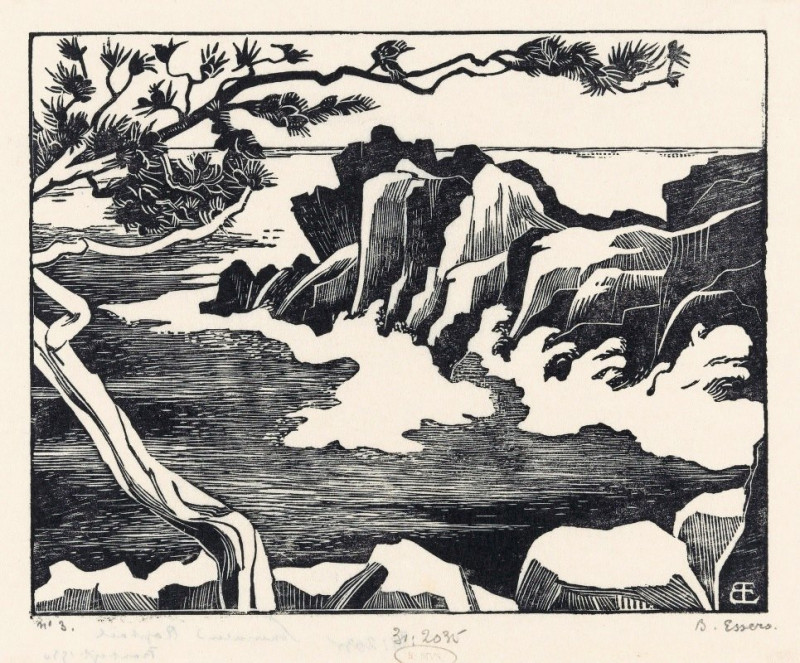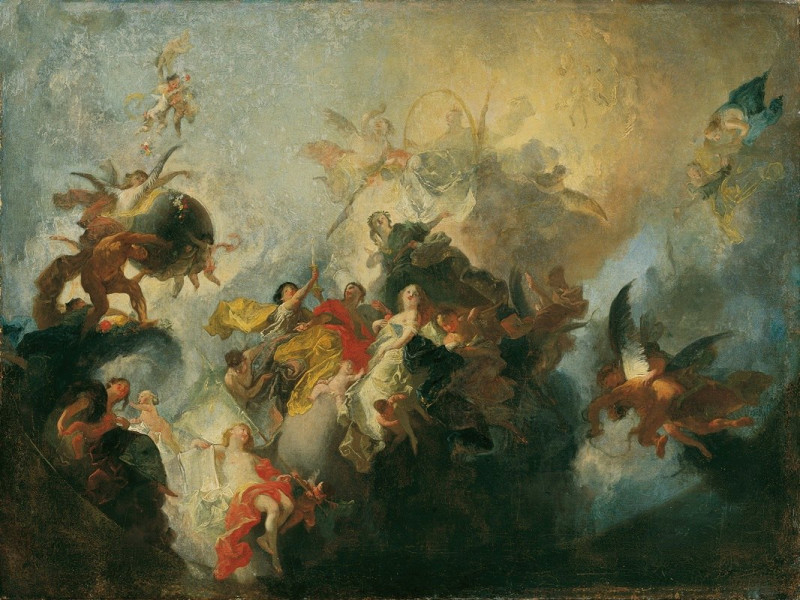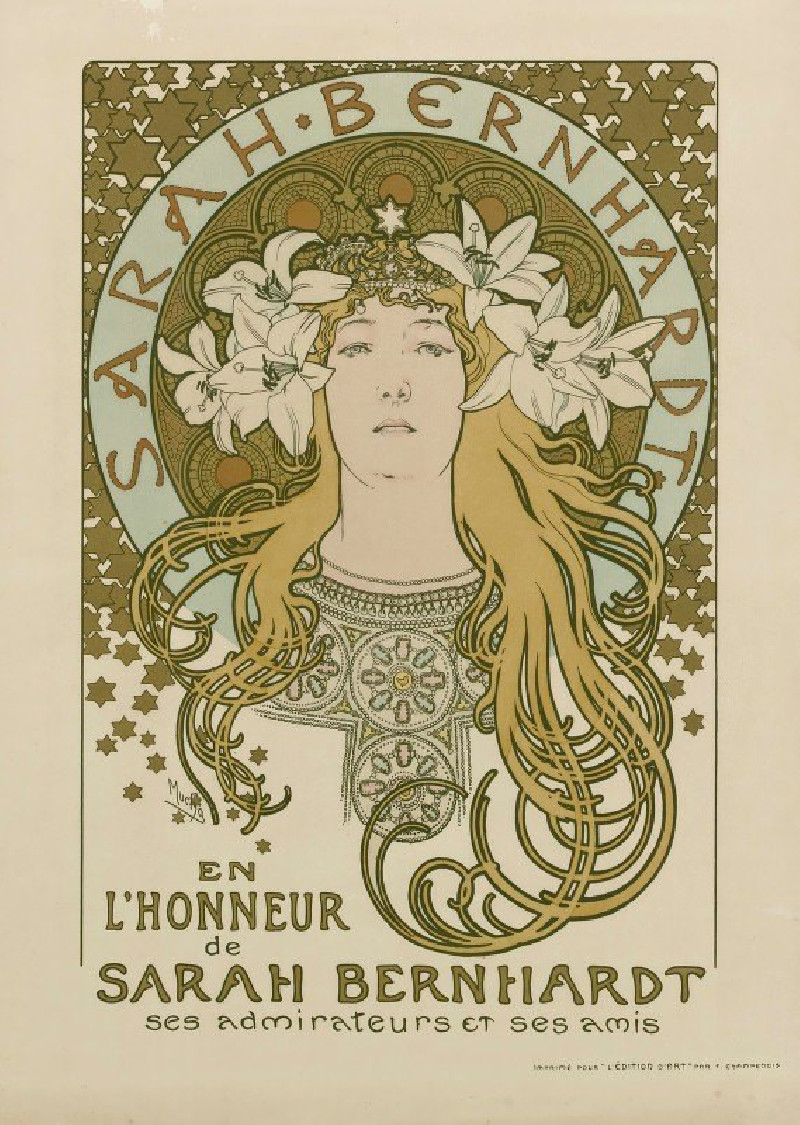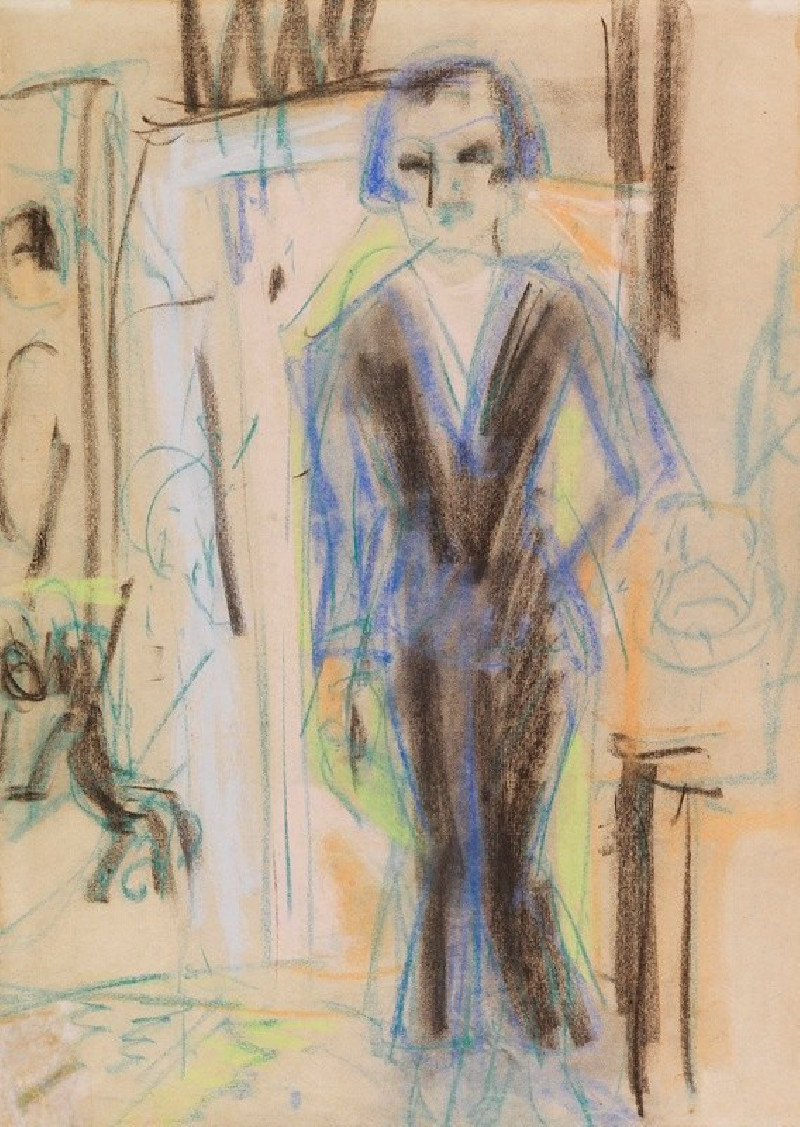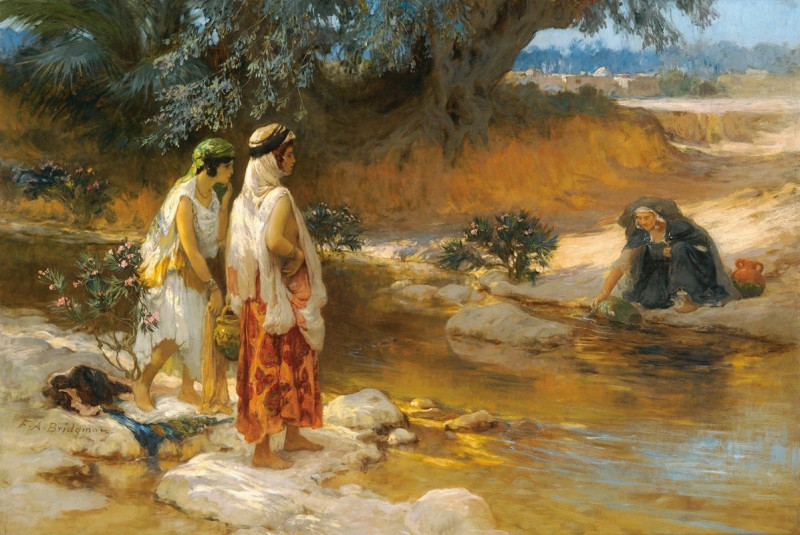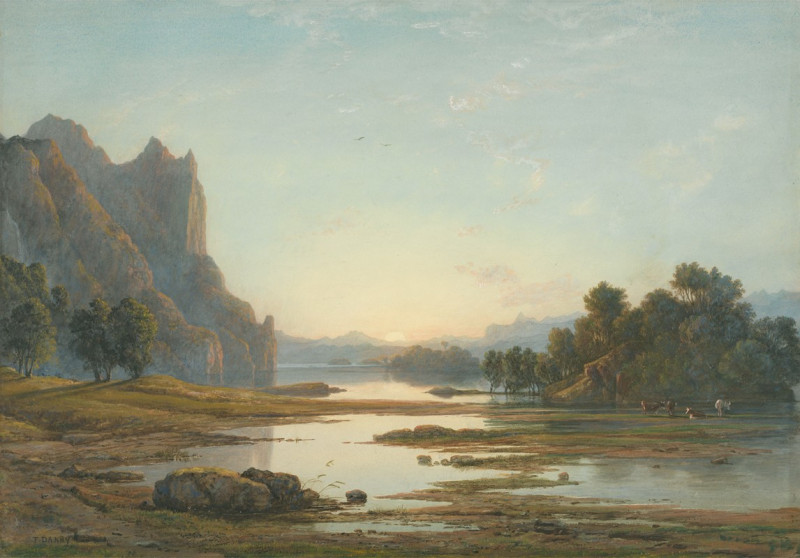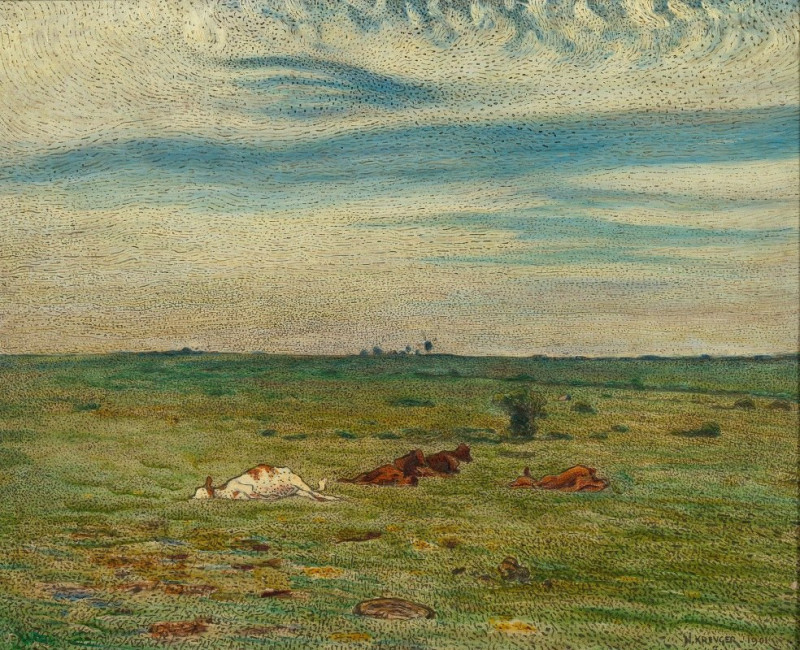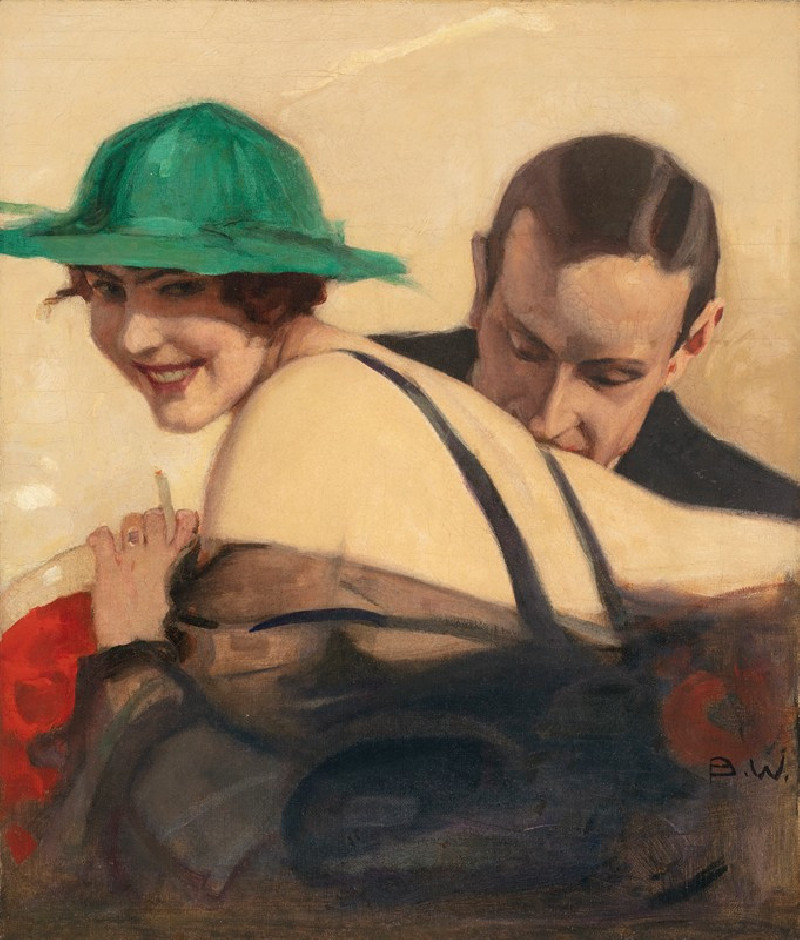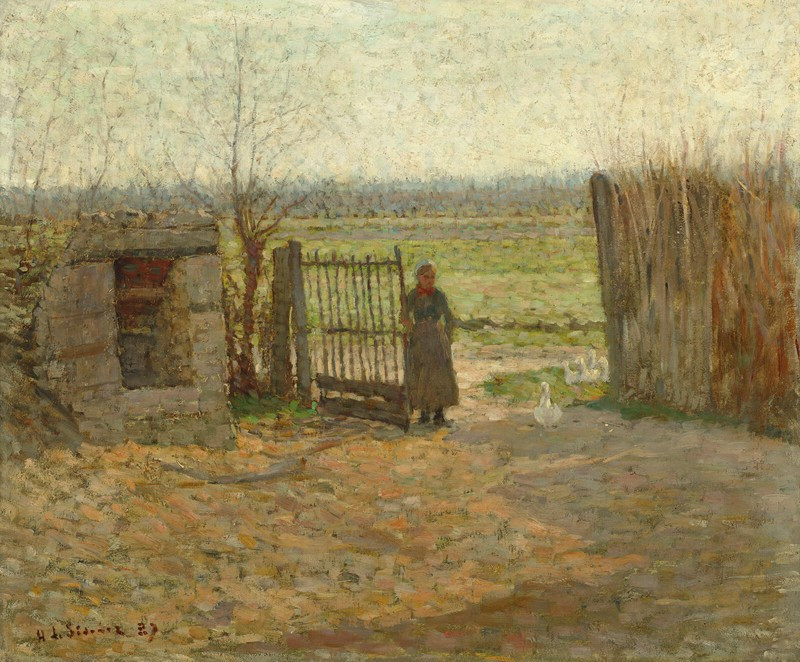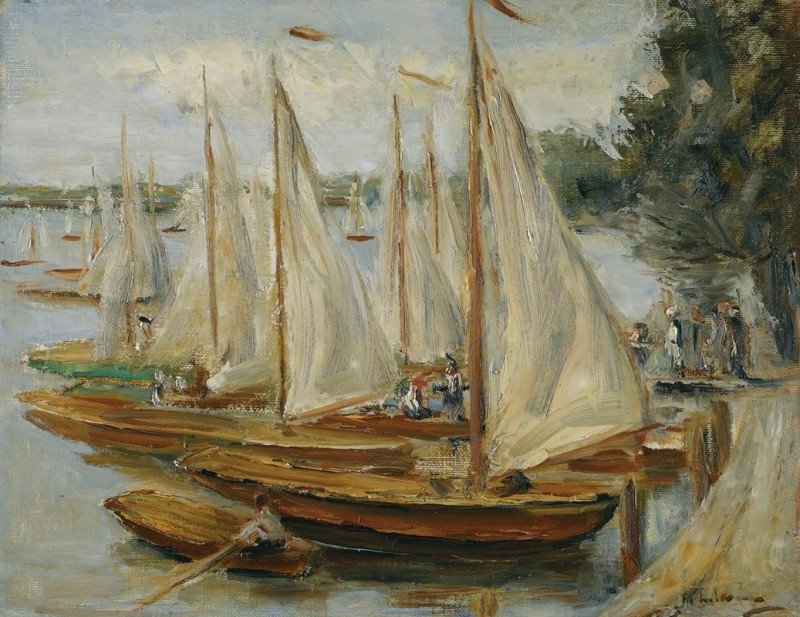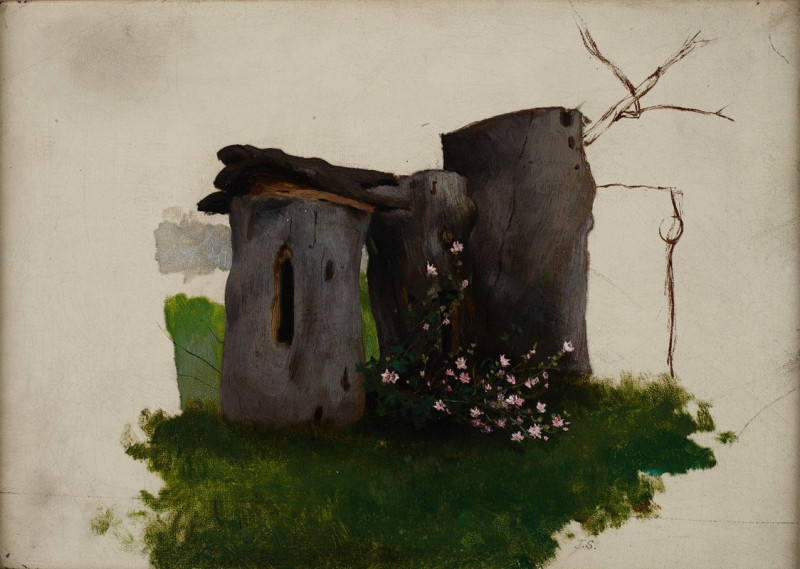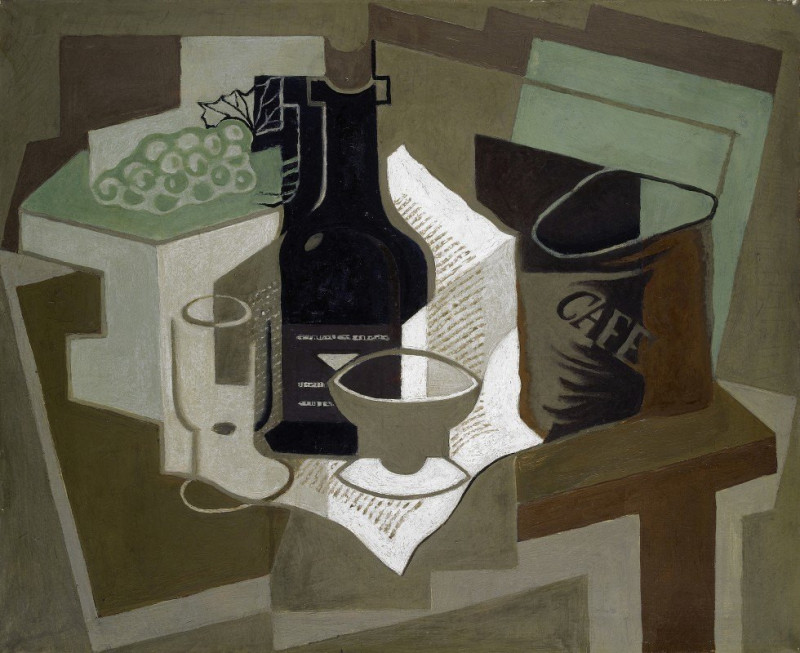Haven bij eb (1927)
Technique: Giclée quality print
Recommended by our customers
More about this artwork
Dive into the serene monochrome world of Bernard Essers with his striking 1927 work, “Haven bij eb” (Harbor at Low Tide). Known for his exceptional skills in woodcut printmaking, Essers captures a peaceful harbor scene that invites viewers to pause and explore the intricate details of a simple yet profound daily life by the sea.The artwork is beautifully composed in high contrast black and white, which enhances the dramatic effect of light and shadow. The scene depicts a calm harbor setting, where small boats gently sway in the placid waters. These vessels, nestled amidst the reflecting water, draw the viewer’s eyeline across the composition. In the foreground, the dark silhouette of the cliffs adds a strong vertical element that contrasts sharply with the gentle horizontal sweeps of the water and sky.Dominating the midground are whitewashed buildings of a small coastal village, nestled under the protection of lush, undulating hills. These structures, characterized by their quaint and simplistic architecture, radiate a sense of quiet solitude. Beyond the village, cultivated fields stretch towards a distant cityscape, underlining the harmonious coexistence of man and nature.The sky, textured with swirling clouds and soft light, casts a dreamlike atmosphere over the land and sea. Above all, the artwork evokes a feeling of timeless calm, as if the moment captured is suspended between the past and future, a true haven at low tide.Bernard Essers’ “Haven bij eb” not only showcases his technical prowess in woodcut art but also reflects a deep appreciation for the subtle interplay of natural elements.
Delivery
Returns
Bernard Essers (11 March 1893 – 13 May 1945) was a Dutch painter. His artistic contributions were showcased in the painting event of the art competition during the 1936 Summer Olympics. Furthermore, Essers' work was featured in the exhibition and sale titled Onze Kunst van Heden (Our Art of Today) held at the Rijksmuseum in Amsterdam in 1939.

